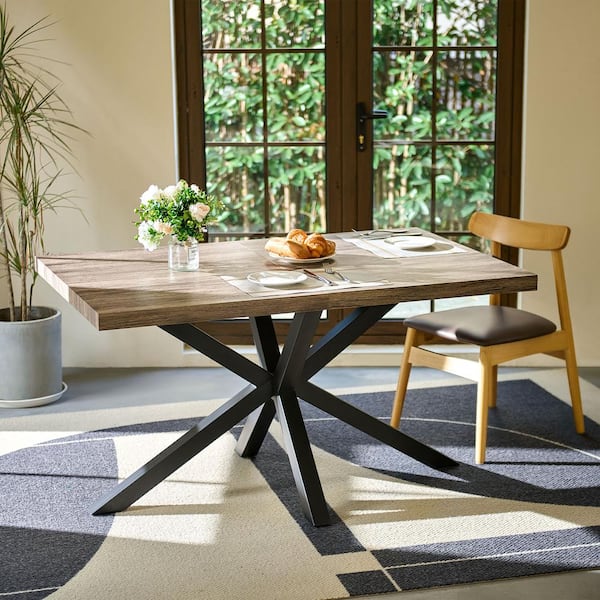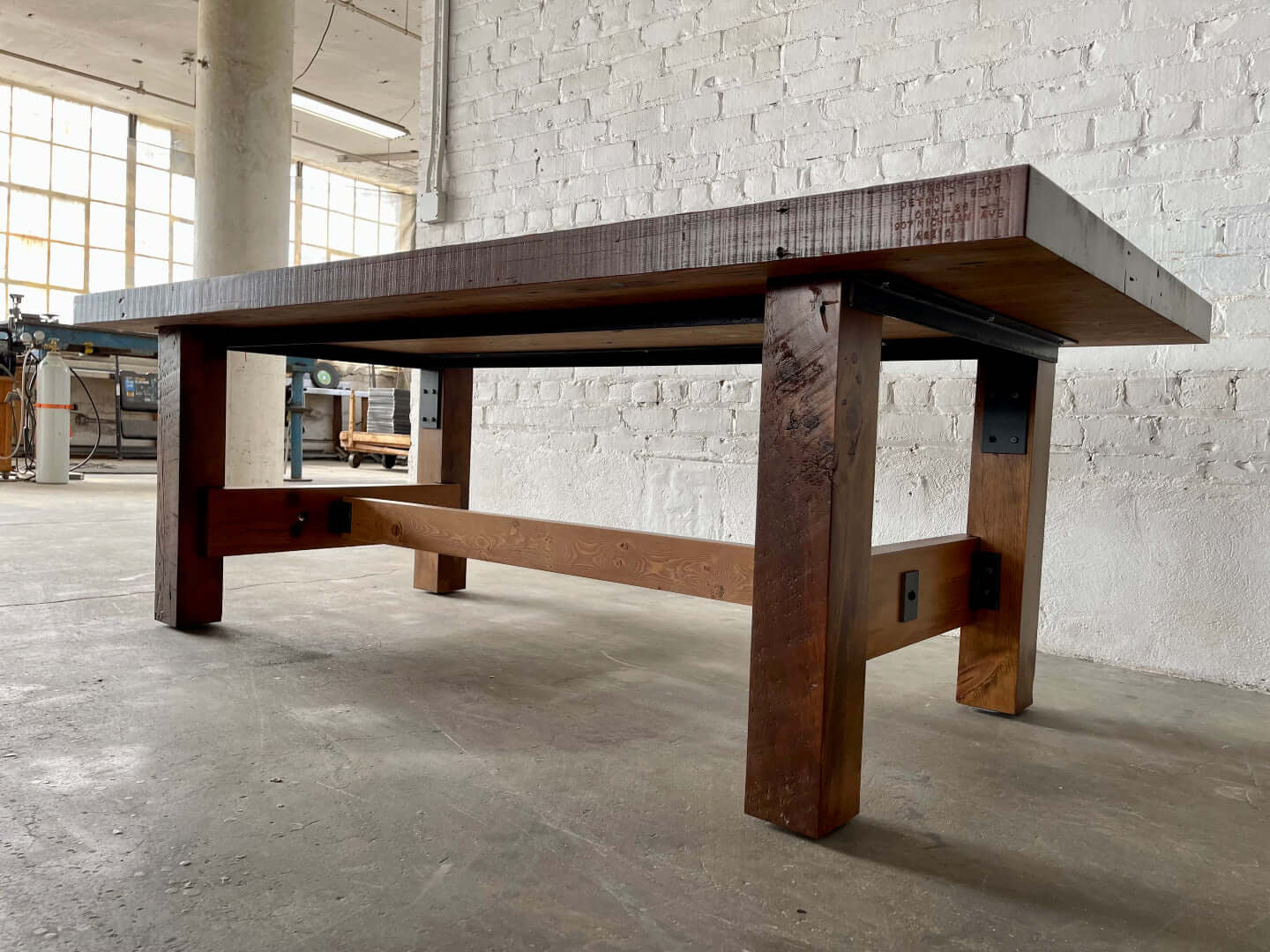Boost Your Dining Area with Stylish Dining Table Legs Wood Layouts
Boost Your Dining Area with Stylish Dining Table Legs Wood Layouts
Blog Article
Secret Aspects to Bear In Mind for Eating Table Legs Timber Choices
When selecting timber for dining table legs, a number of crucial elements call for careful factor to consider to make sure both functionality and visual allure. The choice of wood type, defined by its sturdiness and special grain patterns, plays a pivotal role in the overall style and long life of the piece.
Wood Types and Qualities
When picking wood for dining table legs, it is important to recognize the one-of-a-kind features of different timber types. Various woods provide unique benefits and drawbacks, influencing both the sturdiness and visual appeal of the finished product.
Oak, understood for its excellent sturdiness, also features a famous grain that can include personality to the table. Cherry wood, with its rich shade that strengthens over time, provides an elegant look but might need more maintenance to prevent scrapes.
On the other hand, softwoods like want and fir are a lot more budget-friendly and simpler to deal with, yet they are much less long lasting than hardwoods. Pine is light-weight and features a cozy, rustic appearance, making it a preferred choice for casual dining setups. However, it is more at risk to dents and scrapes.
Comprehending these qualities will aid in making an informed choice to make certain the legs of the table meet both aesthetic and practical requirements.
Grain Patterns and Aesthetics
The wood's grain is not merely an aesthetic feature; it imparts a distinct personality and charm to each piece. Various timber types show distinctive grain patterns, ranging from the straight lines of maple to the detailed swirls of oak and the striking figure of walnut.
Furthermore, the alignment and scale of the grain can affect the viewed dimension and elegance of the table. Larger, extra pronounced grains might offer a vibrant, remarkable impact, while finer, subtler grains can develop an improved, underrated look. Additionally, the finishing process can further boost these patterns, emphasizing the all-natural elegance of the timber and drawing out rich hues.
Ultimately, the selection of grain pattern ought to balance with other layout components, such as the table top and bordering furniture, making certain a cohesive visual that boosts the eating experience. Thoughtful selection of wood grain not just contributes to the table's charm yet additionally shows the proprietor's preference and style.
Toughness and Toughness
The resilience and strength of eating table legs are critical considerations for making certain durability and stability in any type of eating room. Picking the right timber is essential, as different types exhibit differing degrees of strength.

Inevitably, spending in top quality wood and robust building methods will certainly produce a table that stands the examination of time, while offering a trustworthy structure for plenty of meals shared amongst family and good friends. Prioritizing longevity and toughness makes certain that your table remains practical and aesthetically pleasing for years ahead.
Maintenance and Treatment
Correct maintenance and care are essential for protecting the toughness and stamina of eating table legs made from wood. Regular cleansing is crucial; check this making use of a soft, damp towel ensures that dust and particles do not build up, which can bring about scrapes and dullness. It is advisable to avoid extreme chemicals or rough materials that can harm the coating.
In addition, using an appropriate wood gloss or wax regularly can aid maintain the luster and protect the wood from dampness and spills. It is essential to adhere to the supplier's recommendations concerning the type of item to make use of, my explanation as certain finishes might respond adversely to certain chemicals.
Humidity and temperature level fluctuations can additionally impact wooden table legs, causing them to warp or crack. It's finest to put the table away from direct sunlight and heat sources. If the table legs have any type of damages or scrapes, resolving these promptly can avoid further damage.
Lastly, regularly examining the joints and screws for rigidity is essential to keep architectural honesty (Dining Table Legs Wood). By sticking to these upkeep methods, property owners can ensure their wooden dining table legs stay functional and attractive for years to come
Environmental Considerations
When selecting wood for eating table legs, it's vital to take ecological considerations right into account. The sourcing and sustainability of timber are paramount in minimizing eco-friendly effect. Choosing wood from certified resources, such as those backed by the Forest Stewardship Council (FSC), guarantees that the hardwood is gathered sensibly, promoting woodland conservation and biodiversity.

Moreover, local sourcing of wood reduces transportation exhausts, supporting regional economic climates while lessening environmental effect. It is additionally suggested to be knowledgeable about the timber's treatment and ending up procedures, as specific chemicals can be damaging to both human wellness and the environment. By prioritizing sustainable timber choices, consumers can add to environmental conservation while appreciating the resilience and charm of their table legs.
Conclusion
In conclusion, picking timber for dining table legs necessitates mindful factor to consider of numerous elements, consisting of wood kinds, grain patterns, and durability. The visual appeal of distinct grain patterns can enhance the total design, while the stamina of hardwoods makes sure long life. Upkeep requirements and ecological sustainability additional influence timber choices, stressing the importance of sourcing from accredited or reclaimed materials. An informed choice procedure eventually adds to a practical and aesthetically enticing dining space that aligns with lasting practices.
When selecting timber for eating table legs, like it several essential elements warrant cautious factor to consider to ensure both capability and aesthetic charm.Proper maintenance and care are essential for maintaining the toughness and strength of eating table legs made from wood.When choosing timber for dining table legs, it's crucial to take ecological considerations right into account. By prioritizing lasting wood choices, consumers can add to ecological conservation while delighting in the sturdiness and charm of their dining table legs.
In verdict, choosing wood for dining table legs necessitates careful consideration of different variables, consisting of wood types, grain patterns, and longevity. Dining Table Legs Wood.
Report this page